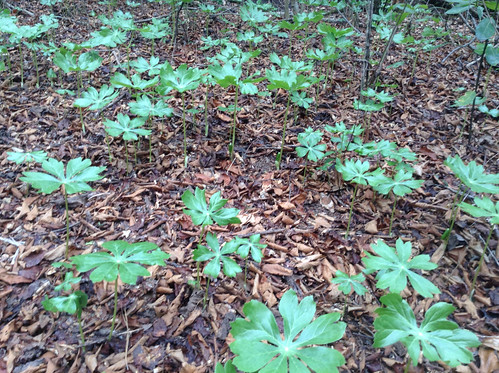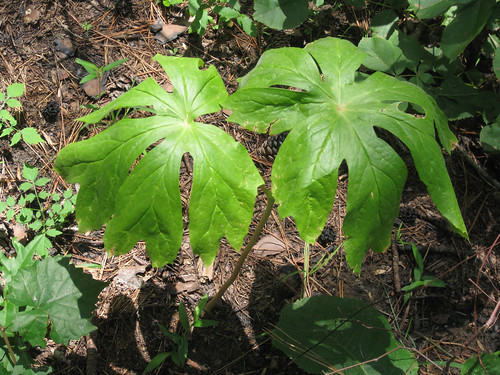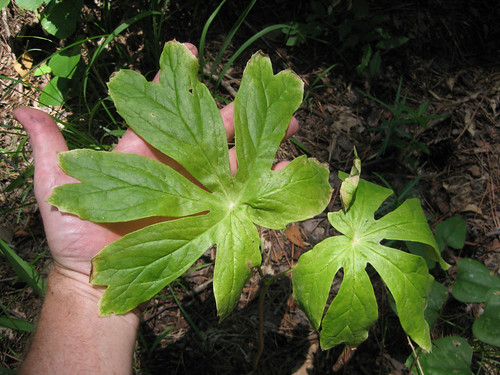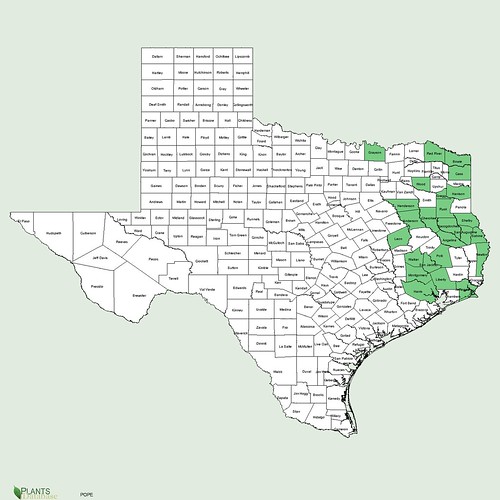Abundance: uncommon
What: fruit
How: peel rind then eat raw
Where: woods
When: early summer
Nutritional Value:
Dangers: fruit contains a small amount of toxin but is safe to eat in moderation. Do not eat the seeds or fruit rind.
Mayapple seedling.

Mayapples in East Texas woods in March.

Mayapple plants in June in central Texas. They can have either one or two leaves.

Individual mayapple plant.

Mayapples stems are about nine inches long before the Y-joint and about 18 inches overall.

Mayapple leaves.

Mayapple Y-joint. A single fruit grows off the small stem at the center of the Y-joint.

Texas distribution, attributed to U. S. Department of Agriculture. The marked counties are guidelines only. Plants may appear in other counties, especially if used in landscaping.

North American distribution, attributed to U. S. Department of Agriculture.

Mayapples are oddly named as its single, white flower appears in the spring, but the fruit doesn't ripen until early June in Texas. The fruit is yellow and somewhat wrinkly when ripe and small, about two inches along it's longest dimension. Do not eat the fruit if it is still green. Peel the fruit and just eat the inner flesh. Do not eat the skin/rind as it is a strong laxative. The seeds, root, and leaves contain powerful toxins and must NOT be consumed. After enjoying the fruit's flesh, plant the seeds so more mayapples will grow.
Mayapples prefer moist soil in dappled shade so look for it in low-laying woods along paths or where the tree canopy has openings that let a bit of sunlight reach the forest floor. Usually several of the above ground portions near each other are connected via a long, single root. The entire above-ground portion dies away in late summer/early fall.
Buy my book! Outdoor Adventure Guides Foraging covers 70 of North America's tastiest and easy to find wild edibles shown with the same big pictures as here on the Foraging Texas website.

